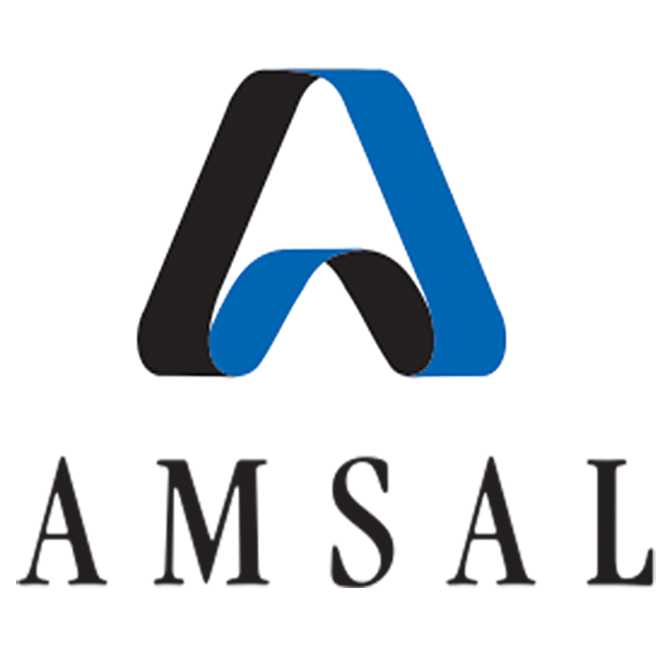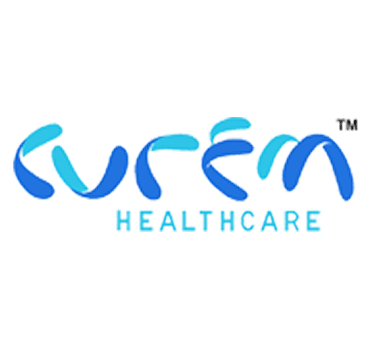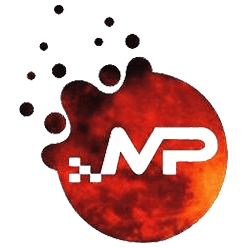It is good to hear about what one can expect in residency. We provide in-patient care and clinic out-patient services for treatment of vascular disease of the brain, head, neck and spine. The vascular guys (and gals) are doing limited things compared to the IRs who do everything. NIISwa is the statewide, cross-campus neurointerventional and advanced neuroimaging service of Western Australia. As a part of the Maimonides/SUNY Downstate Neuroscience Institute and Jaffe Comprehensive Stroke Center, the MMC NES/NIR Fellowship Program is a newly established two-year (24 months) Non-ACGME/non-CAST clinical fellowship program leading to Board eligibility.This program is designed to provide top-notch . (ERAS Interventional Radiology) While this is a new pathway, neurointervention-focused training is currently expected to add only one fellowship year after completion of residency. document.write(addy40474); Its been a long day, but Im doing what I love, and thats what counts. Neurointerventional surgical procedures include brain aneurysms, arteriovenous malformations (AVMs) and tumors in the brain, neck and spine. A day in the life of a fourth year Interventional Radiology (IR) resident looks a lot different from the first years of residency. Can anybody in here hook me up with a rad spot at their program? To limit yourself to a field like that would be a terrible idea, IMO. This email address is being protected from spambots. NeuroInterventional Radiology (NIR) is a treatment approach to conditions that occur within the vessels of the brain or within the spinal cavity. Neurointervention is a word used to describe minimally invasive treatment approaches utilising image-guidance to treat diseases of the brain, spinal cord, or spinal column. Im mentally prepared for todays cases, but I also know that the schedule could change at any moment. Create an account to follow your favorite communities and start taking part in conversations. About 1:00 PM, after completing three procedures, I see my chance to eat lunch and I take it. 2. The Australian and New Zealand Society of NeuroradiologyVisit the ANZSNR website, The Conjoint Committee for Recognition of Training in Interventional NeuroradiologyVisit the CCINR website, Computed Tomography (CT) Angiography and Perfusion, Magnetic Resonance (MR) Advanced Neuroimaging. Therefore, it is important to consider which concomitant role you would be most interested in and fulfilled by throughout your training and career. #2. Learn more: Vaccines, Boosters & Additional Doses | Testing | Patient Care | Visitor Guidelines | Coronavirus. I am currently interested in neurosurgery, but the more I learn about interventional neuroradiology, the more intrigued I become. Interventional Neuroradiology utilizes cutting edge imaging, interventional and surgical treatment of stroke, aneurysm, and other neurovascular disorders. 2019;212: 899-904. MIR performs more neurointerventional radiology procedures than any other provider in St. Louis and the surrounding areas. Lifestyle- variable depending on the number of other taking call, whether you "fill" the call roster or refer out, amound of diagnostic work you do. addy40474 = addy40474 + 'health' + '.' + 'wa' + '.' + 'gov' + '.' + 'au'; But every year neurology gains a bit of traction in the IR world. Fortis is one of the best Neuro Interventional Radiology hospitals in India which specializes in all brain and spinal treatments, making it the best Neuro Radiology Hospital in India. Monday - Friday St. Louis, MO 63110 (Botanical Heights area) $81,453 - $123,864 a year. Chief, Division of Interventional Neuroradiology Professor, Department of Radiology Email: abrook@montefiore.org Telephone: 718-920-7050. For some people, choosing a radiology fellowship is easy. Sometimes an inpatient is having an issue, so the person assigned to the consultpager goes and decides if they need help right away, if they can wait a couple hours, or if they will be okay until the next day. Cerebrovascular disorders evaluated by our team include brain aneurysm, brain/spine arteriovenous malformation, stroke, cerebrovascular stenosis, and vascular tumors. I will be glad if Im assigned a mentor , Interesting ! P: +61 (8) 6152 5098 Most NIR physicians are on call nearly everyday or every other week for 1 week at a time. This medical specialty is also called neurointerventional surgery. For whatever reason, room 20 doesnt exist. This isn't true anymore for UCSF either. This training would be expected to lead to competence in all aspects of diagnostic and interventional neuroradiology. We collaborate with many clinical service groups across Monash Health and the wider Victorian health network, and provide teaching and mentoring opportunities to junior clinicians, medical students, and allied health professionals. Generally, a two-year Neurointerventional training would follow. To say that neurosurgery is taking over Neuro-IR is far from the truth. Which specialty should you choose? 8 hour shift + 1. Neurology and Neurosurgical Care. 6) future outlook. At Another Johns Hopkins Member Hospital: Masks are required inside all of our care facilities, COVID-19 testing locations on Maryland.gov, Diagnosis and Screening for Neurological Conditions. You will be called to do the procedure if it is coilable and the risk/benefit favors endovascular coiling vs surgical clipping. The 3 Month (100 Day) MCAT Study Schedule Guide: 2022 Edition, Neuroradiology v. interventional neurology, All resources are student and donor supported. But I don't know the details or specific steps so I would love to learn more about this. Neurosurgery is 7y of residency and at least one year of fellowship after graduation (most people do 2 years of fellowship but have the first year done during the PGY 4-5 research years). Mitchell. Sometimes patients get admitted by another service or physician as a courtesy to another physician. During the first three years of residency, IR residents follow a path similar to their peers, just with more IR exposure(read about the day in the life of a resident here). How does the NIR lifestyle compare to the IR lifestyle in an academic setting? The aneurysm is like a small sac and is localised, meaning it is limited to a small area, within the artery. The term endovascular means inside a blood vessel. Endovascular neurosurgery uses tools that pass through the blood vessels to diagnose and treat diseases and conditions rather than using open surgery. INR includes angiograms of the head and neck, cerebral and spinal circulation and related procedures (aneurysm coiling, embolization, angioplasty, stenting), and spinal interventional procedures (myelography, fluoro-LP, vertebroplasty) as well as percutaneous biopsy in the head and neck and spine (not intracranially) under imaging guidance. Outside of Maryland (toll free) 410-464-6713. Radiologic Technologist jobs. It is harder to enter from neurology than from radiology or neurosurgery, but still possible. Our service offers: addy40474 = addy40474 + 'health' + '.' + 'wa' + '.' + 'gov' + '.' + 'au'; Be an early applicant. Neuro-Interventional Surgery/Radiology. E: Perth WA 6000 Many such fellowships, such as UCSF still almost exclusively train radiology applicants. But the field is wide open to applicants from neurology, neurosurgery, and radiology alike and thank God for that, because each of them contribute significantly to the field. This fellowship is designed for individuals who desire sub-specialized training in neurointerventional radiology. The most severe strokes are typically treated with thrombolysis (use of a drug to dissolve a clot) followed by thrombectomy (mechanical removal of a clot). Carotid artery angioplasty/stenting. These include brain aneurysms, vascular malformations, carotid disease and interventional stroke therapy. Its possible, but hard to be a competitive applicant for neuroIR fresh out of residency because other applicants will have done neurosurg or radiology + IR (both longer trading with more relevant experience). \n It sounds like you do quite a few as MSK. Judging by the recent CTA, this patient has some heavy disease burden so multiple areas will likely need treatment and we may even have to deploy some stents to get a good result. This email address is being protected from spambots. . You should also shadow a diagnostic radiologist because if you have no interest in diagnostic radiology, the radiology route is not for you. This manuscript traces the origins of INR and describes its evolution to the present day. Most of the NSGY attendings are the ones running IR here. Neurointerventional Surgeon Education and Training After medical school and a 1 year internship, the doctor will enter a residency program consisting of 4 years of radiology, 6 to 7 years of neurosurgery, or 4 years of neurology. From my understanding, these programs generally admit internal candidates who they've groomed for a while with more focused neuroradiology training during their residency. But Im glad Im not on-call tonight. Angle asks questions about the cases scheduled for today. In that case, we stick around and work a little longer. you will really have to do a lot of investigation at your institution and other institution about WHO are the current and 'future' fellows. This is a radiology procedure that looks at how blood is flowing in the brain. The lifestyle can be demanding, especially with a community practice. We are currently accepting applications for the Interventional Neuroradiology Imaging Fellowship. Book Appointment Online. At 7:00 AM the attending for the day, Dr. Fritz Angle, arrives. Glad to hear you enjoyed it! 1928 Alcoa Highway, B315 | Knoxville, TN 37920 | 865-558-0225 option #2 | Fax 865-540-3857. Doctors who specialize in neurointerventional radiology (also known as neurointerventional surgery or endovascular neurosurgery) use imaging to perform minimally-invasive procedures to diagnose and treat diseases of the brain, neck and spine. I think at some places (MIR comes to mind) it's only a 1-year fellowship. Training over each year, which will all be scheduled in Addenbrooke's Hospital, is to be structured as follows: Year 4: 8 sessions neuroradiology (including diagnostic and interventional sessions) and 2 general radiology sessions. Our interventional technologists have specialized training and are licensed by the American . There are two residents, three fellows, and perhaps a few med students in the room and he walks us all through the particulars of the diagnosis and treatment of the case, how they found and stopped the bleeding in the spleen. Radiology requires diagnostic neuroradiology fellowship before going NeuroIR so also 3-4y of fellowship training. Neurointervention. It's a long road to get to NIR, and the lifestyle after is not that fun. Sometimes the attending asks in advance what wed like to learn about. They may have known they wanted to be an interventional radiologist or pediatric radiologist since they were two years old. Or if you have plans to stay in academics at a tertiary center than NeuroIR is good too. Any help would be much appreciated. Physician and Resident Communities (MD / DO). Way worse. We diagnose and treat a variety of conditions that primarily affect the head, neck and spine. This procedure uses a small balloon and/or a tiny metal scaffold called a stent to open a narrowed carotid artery. Every time I wonder if rads is for me, RADRULES swoops in and convinces me. I am a med student who is super interested in this field. From a rads perspective, you essentially gain the lifestyle of a neurosurgeon for not that much more reimbursement and three extra years of training. +1-410-502-7683. //--> Prof. Peter. I am confused as to the distinct differences between the two pathways. 4)How do you plan to ease the call as you get old say 55 5) any new therapies that are currently in trials? Find a doctor who specializes in neurointerventional radiology, and schedule an appointment online. 1 month ago. Sir Charles Gairdner Hospital P: +61 (8) 6457 4455 document.write('<\/a>'); 2 acquaintances are actually in their first year of NIR. Radiology. Why the rooms arent numbered 1-6, no one knows. I self assign to room 16 and start looking at the various cases, what were planning to do and why, what kinds of complications we might run into, and what kind of relevant imaging is available to pre-plan the procedure. Fax:(415) 353-8606 Interventional Neuroradiology is a specialty that uses minimally invasive techniques principally to treat disorders of the circulation of the brain and spinal cord in children and adults. The neurointerventional radiology team at Lahey Hospital & Medical Center, the only comprehensive stroke center north of Boston, provides the latest image-guided procedures to treat a wide range of conditions. By having the skills to read diagnostic neuro studies and do complex NIR procedures, you are basically every group's wet dream. From 5:00 PM to 7:00 AM the next morning whoever is the on-call fellow will carry the consultpager. $285,824. Historically radiology dominated, neurosurgery has become the dominant force in many areas, while neurology has fought for a foothold. Of course, in teh past, this fellowship has gone to radiologists, but now, in my opinion and what i hear, the fellowships are going to teh neurosurgeons. Further knowledge on options would be greatly appreciated. It is done with thin tubes (catheters) and small tools. var addy40474 = 'NIISwa' + '@'; Interventional Neuroradiology also includes the minimally invasive . Neurointerventional radiology (NIR) is a specialty dedicated to treating blood vessel disorders in the brain, spine, head and neck. The word endovascular means "inside a blood vessel.".
neurointerventional radiology lifestyle
10
Mar

























